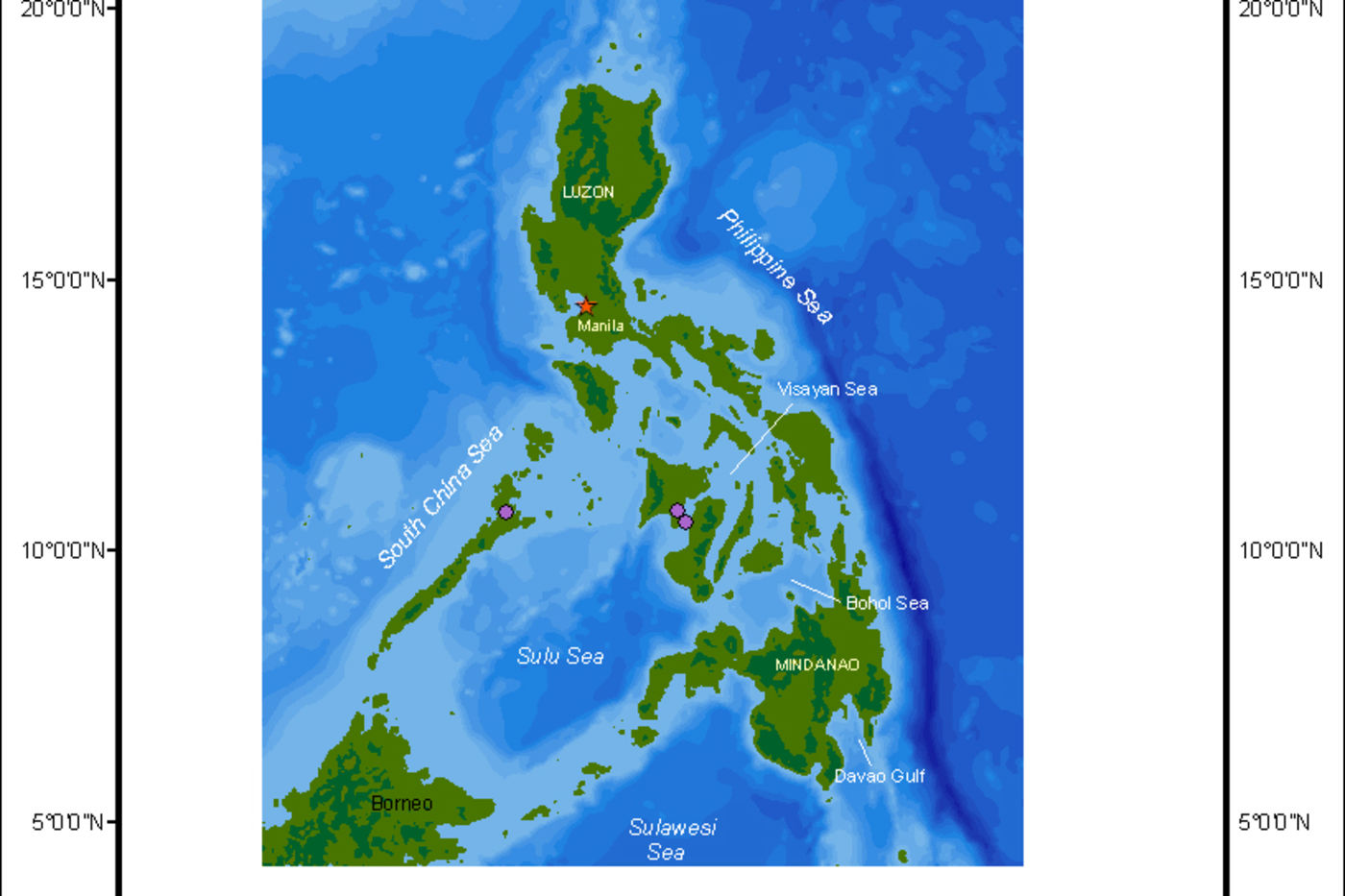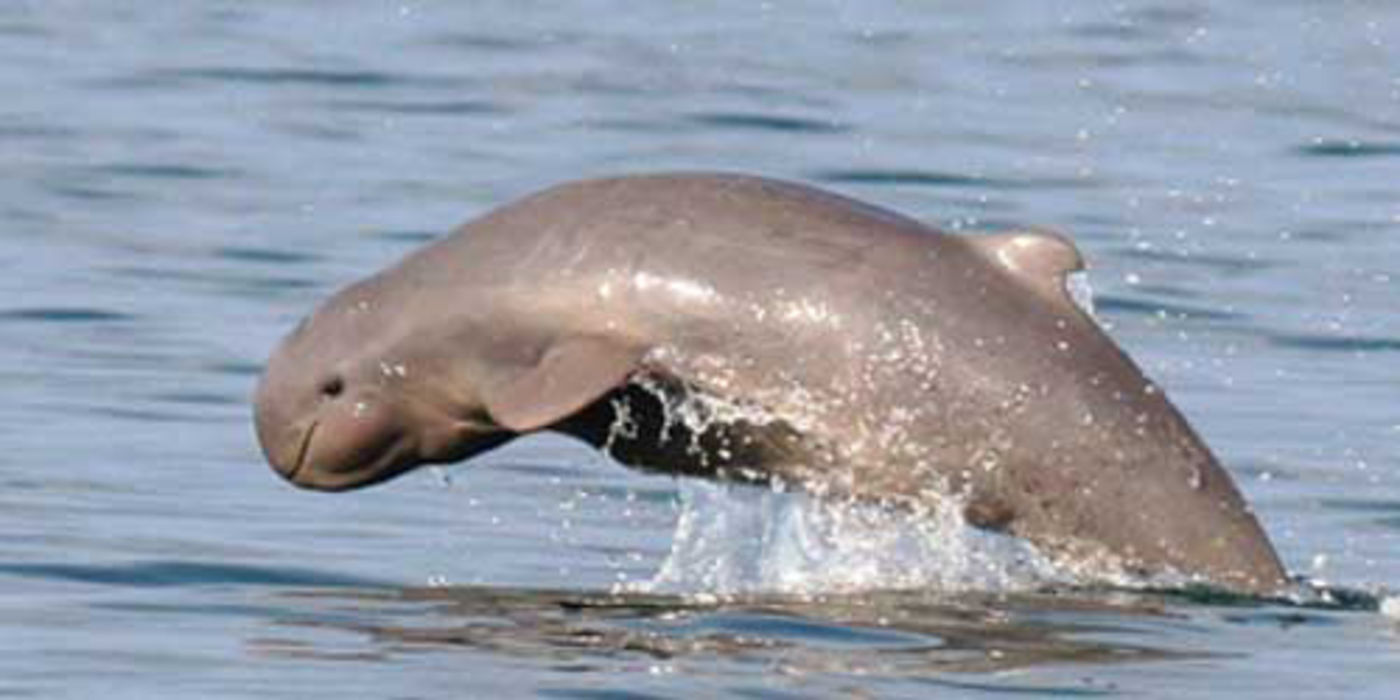Back to Supplement to the Synopsis of Philippine Mammals homepage
Orcaella brevirostris
(Owen in Gray, 1866). Catalogue of Seals and Whales in the British Museum:285. British Museum, London.
Type locality: Harbor of Vizagapatam, Madras, Bay of Bengal, India.
Order: CETARTIODACTYLA
Family: Delphinidae
Common Name: Irrawaddy dolphin
Identification:
A small delphinid with adult size reaching up to 2.8 m. It has a moderately robust body with a bulbous head that overhangs the mouth. There is no definite beak, and in some animals a neck crease is visible (Smith, 2009). A distinct dorsal groove runs from the neck crease to the dorsal fin. The blowhole is U-shaped and opens toward the front, a reverse of the situation in most dolphin species (Jefferson et al., 2008). The small, triangular and slightly falcate dorsal fin is set just behind the mid portion of the body. The flippers are large with curved leading edges and rounded tips. Coloration is uniform gray on the back and sides and light on the ventral surface.
Distribution:
Patchily distributed along the shallow, coastal and brackish waters of tropical and sub-tropical Indo-Pacific region. They occur from Borneo and the central islands of the Indonesian archipelago north to the Philippines and west to the Bay of Bengal (Jefferson et al., 2008). Freshwater populations occur in river systems in Myanmar, Indonesia, Cambodia, Lao PDR and Vietnam (Smith, 2009). They also inhabit partially isolated brackish water lakes and lagoons in India and Thailand (Smith, 2009). In the Philippines, known to occur in Malampaya Sound, Palawan (Dolar et al., 2002; Smith et al., 2004), and recently found also in Iloilo and Guimaras Straits in the Visayas (Bagarinao, 2005; Dolar et al., 2009).

Map courtesy of L Dolar.
Habitat and Ecology:
Habitat includes shallow, coastal, brackish and sometimes freshwater systems, and brackish water lakes and lagoons. Group size is usually between 2-6 but sometimes can reach 15 animals. Water spitting, wherein a dolphin expels a well-directed stream of water from its mouth to a distance of up to 2 m, has been observed in the field and is believed to be associated with feeding (Smith, 2009). Cooperative fishing was observed in Ayeyarwady River in Myanmar wherein dolphins help herd fish into the fishermen’s net (Smith, 2009). They feed on a variety of freshwater and brackish-water fish and cephalopods (Jefferson et al., 2008).

Photo courtesy of M Matillano. From Malampaya Sound, Palawan Island.
Status:
Very rare in the Philippines. The population in Malampaya Sound is composed of only 77 animals *C.V.=*0.27) (Smith et al., 2004) and has been declared by IUCN as Critically Endangered. The Visayan population is also very small. Other critically endangered populations are those of Mahakam River, Ayeyarwady River, Mekong River and Songkla Lake. All other populations throughout its range are considered Vulnerable. (Reeves et al., 2008).